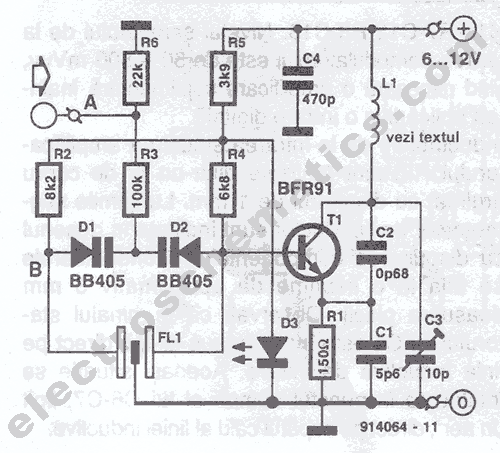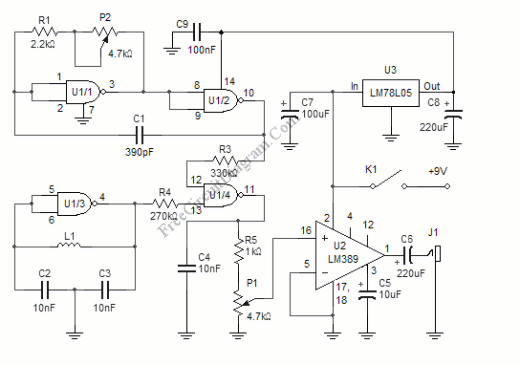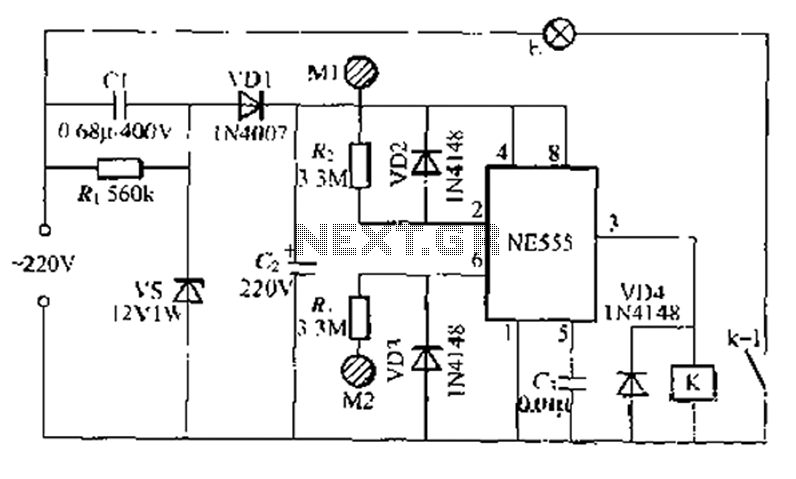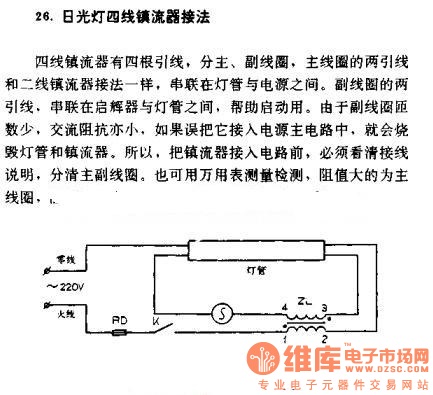
DIY Stun Gun Circuit
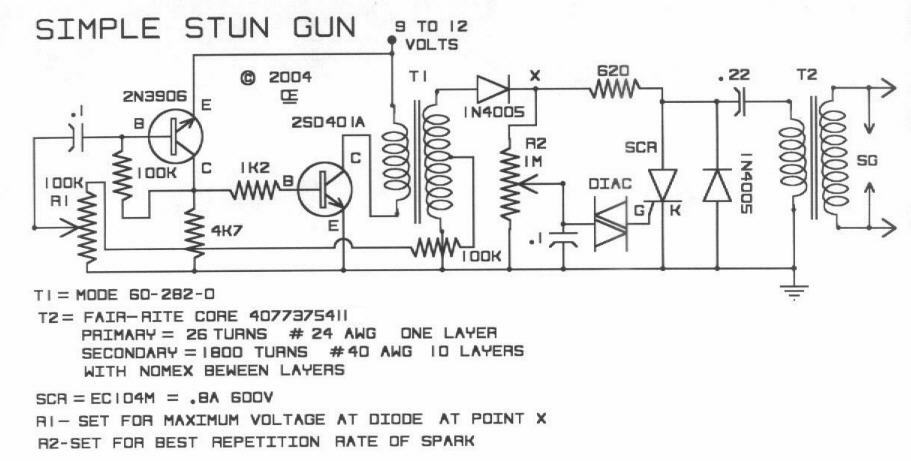
This is a DIY simple stun gun circuit presented solely for educational purposes. There is no recommendation for constructing these stun guns or for their actual use in any capacity.
The circuit for a DIY stun gun typically consists of a high-voltage transformer, a capacitor, a switch, and a discharge electrode. The high-voltage transformer is essential for stepping up the voltage from a low-voltage power source, such as a battery, to a level that can produce a significant electric shock. The transformer may be sourced from various devices, such as a flyback transformer from an old television or a neon sign transformer.
The capacitor in the circuit serves to store electrical energy, which is then discharged through the electrodes when the switch is activated. The choice of capacitor is critical; it must be rated for high voltage and capable of discharging quickly to generate a pulse of electricity.
The switch is used to control the flow of electricity from the power source to the transformer and capacitor. A momentary push-button switch is commonly utilized, allowing the user to activate the circuit only when needed, thus minimizing the risk of accidental discharge.
The discharge electrodes are positioned to create an air gap that can break down under high voltage, allowing the electric current to arc between them. The distance between the electrodes can be adjusted to control the intensity and reach of the shock.
Safety precautions are paramount when dealing with high-voltage circuits. Proper insulation, secure connections, and protective enclosures should be implemented to prevent accidental contact with live components. Additionally, it is crucial to adhere to all local laws and regulations regarding the construction and use of such devices, as they may be illegal or restricted in many areas.
This circuit is intended strictly for educational purposes to understand the principles of high-voltage electronics and should not be built or used in practice.This is a diy simple stun gun circuit showned only for learning! In No Way Do I Recommend Building these Stun-Guns or the actual use of them for any purpos.. 🔗 External reference
The circuit for a DIY stun gun typically consists of a high-voltage transformer, a capacitor, a switch, and a discharge electrode. The high-voltage transformer is essential for stepping up the voltage from a low-voltage power source, such as a battery, to a level that can produce a significant electric shock. The transformer may be sourced from various devices, such as a flyback transformer from an old television or a neon sign transformer.
The capacitor in the circuit serves to store electrical energy, which is then discharged through the electrodes when the switch is activated. The choice of capacitor is critical; it must be rated for high voltage and capable of discharging quickly to generate a pulse of electricity.
The switch is used to control the flow of electricity from the power source to the transformer and capacitor. A momentary push-button switch is commonly utilized, allowing the user to activate the circuit only when needed, thus minimizing the risk of accidental discharge.
The discharge electrodes are positioned to create an air gap that can break down under high voltage, allowing the electric current to arc between them. The distance between the electrodes can be adjusted to control the intensity and reach of the shock.
Safety precautions are paramount when dealing with high-voltage circuits. Proper insulation, secure connections, and protective enclosures should be implemented to prevent accidental contact with live components. Additionally, it is crucial to adhere to all local laws and regulations regarding the construction and use of such devices, as they may be illegal or restricted in many areas.
This circuit is intended strictly for educational purposes to understand the principles of high-voltage electronics and should not be built or used in practice.This is a diy simple stun gun circuit showned only for learning! In No Way Do I Recommend Building these Stun-Guns or the actual use of them for any purpos.. 🔗 External reference
Warning: include(partials/cookie-banner.php): Failed to open stream: Permission denied in /var/www/html/nextgr/view-circuit.php on line 713
Warning: include(): Failed opening 'partials/cookie-banner.php' for inclusion (include_path='.:/usr/share/php') in /var/www/html/nextgr/view-circuit.php on line 713

